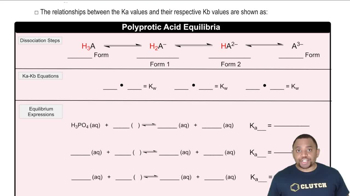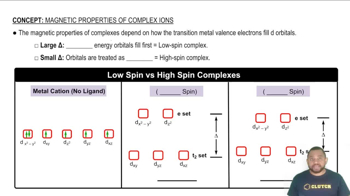Here are the essential concepts you must grasp in order to answer the question correctly.
Acid-Base Equilibrium
Acid-base equilibrium involves the balance between an acid and its conjugate base in solution. For weak acids like hydrofluoric acid (HF), this equilibrium can be described by the dissociation constant (Ka), which quantifies the extent to which the acid donates protons (H+) to the solution. Understanding this concept is crucial for calculating pH and determining the concentration of ions in solution.
Recommended video:
Triprotic Acid Equilibrium
pH Calculation
pH is a measure of the hydrogen ion concentration in a solution, calculated using the formula pH = -log[H+]. For weak acids, the pH can be determined from the equilibrium expression derived from the acid dissociation constant (Ka). This calculation often requires setting up an ICE (Initial, Change, Equilibrium) table to find the concentration of H+ ions at equilibrium.
Recommended video:
Assumption of Small x
In weak acid calculations, the assumption that 'x' (the change in concentration due to dissociation) is small simplifies the math. This assumption is valid when the initial concentration of the acid is significantly higher than Ka. However, if the initial concentration is low (close to the value of Ka), this assumption may not hold, leading to inaccurate results. Identifying when this assumption is valid is essential for accurate pH calculations.
Recommended video:
Low-Spin Complexes are associated with large Δ values and High-Spin Complexes are associated with small Δ values.
 Verified step by step guidance
Verified step by step guidance


